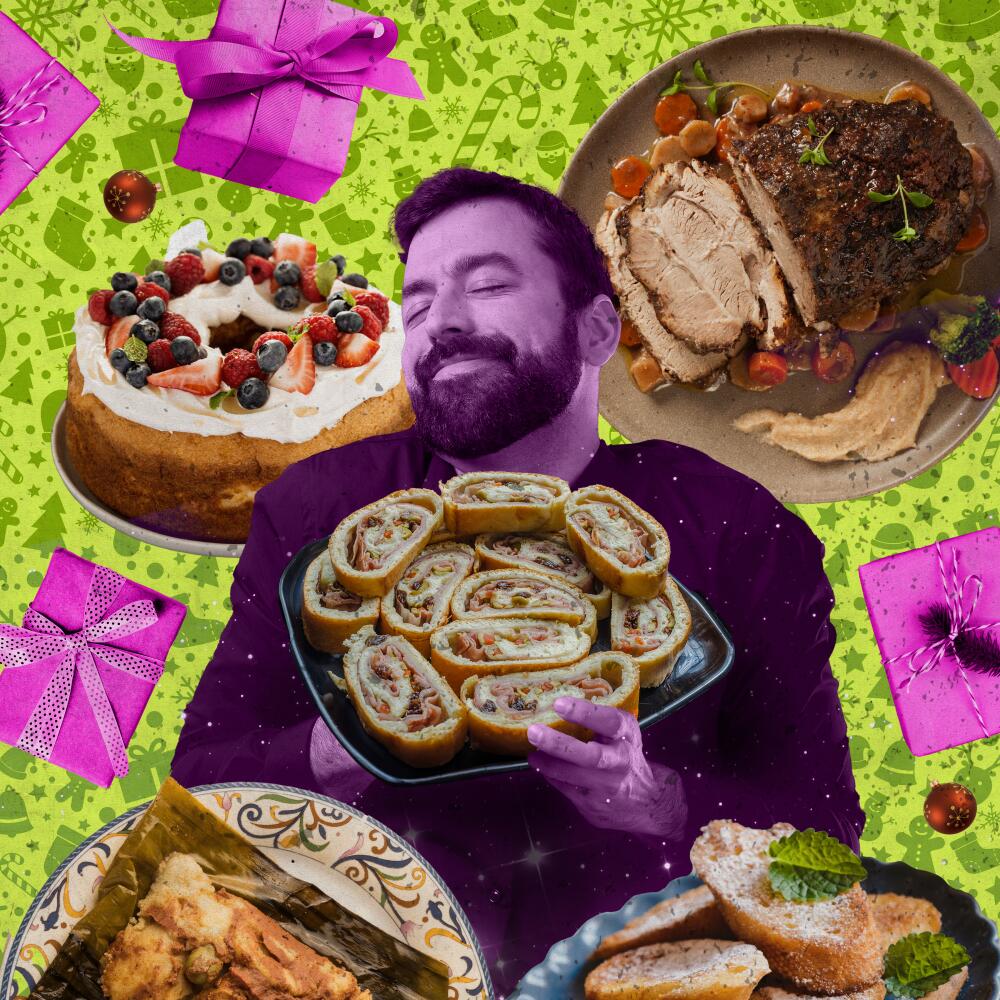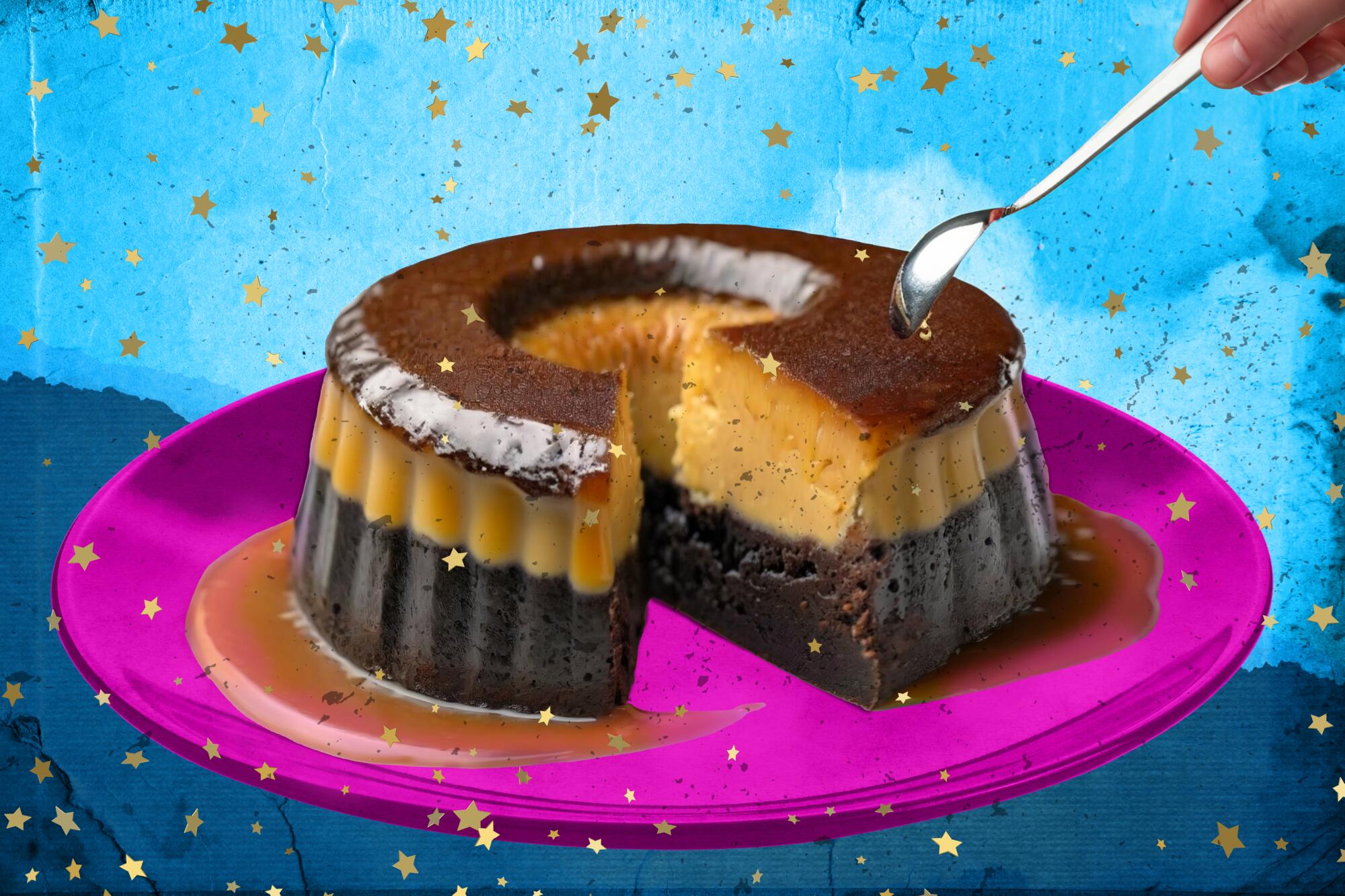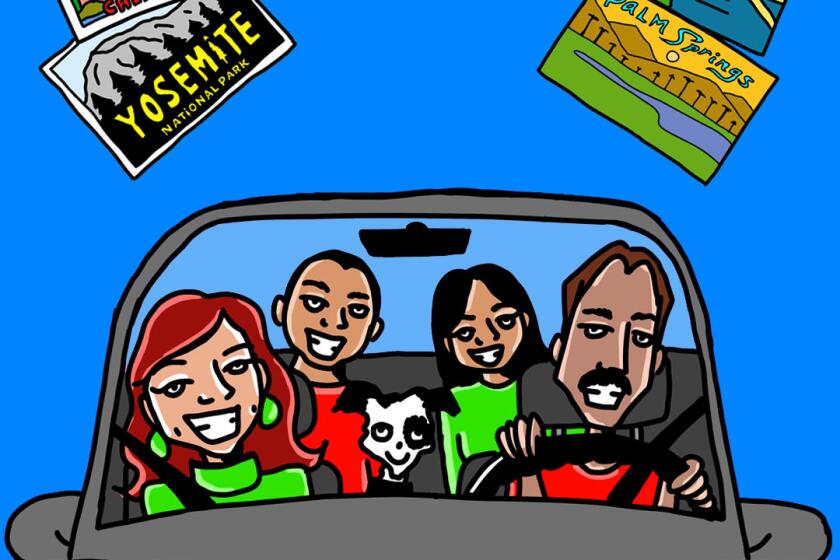
Welcome to the last installment of our three-part series about Latin American holiday traditions. After talking with more than 30 people to put together this series, traveling to their countries through their memories, anecdotes and family recipes, and compiling some of the most popular dishes and traditions, we’ve seen some traditions that overlap and some that stand on their own.
Each country, with its distinctive flair, creates a mosaic of experiences unique to Latin America and the legacy of their people.
In this issue, warm up with a a drink of Mayan origins, sing along to a gaita from Venezuela, and delight with a flancocho sponge cake from the Dominican Republic.
Learn about Día de las Velitas and why it’s essential for Colombians. Get ready to be surprised by a Puerto Rican asalto navideño or enjoy a glass of cola de mono with your Chilean friends.
Guatemala
Guatemalan holiday celebrations feature a food beloved by many Latin American cultures; “the main foods we make are tamales, made of corn dough and a special sauce that we call recado, that includes chile guaque and chile chocolate, among many other ingredients. We also add meat such as pork or chicken,” said Kimberly Loarca, vice consul at the Guatemalan Consulate in Los Angeles.
Ponche is, for most Guatemalans, a key ancestral element, “without ponche, there is no Christmas or New Year. It is a fruit-based drink that contains pineapple, papaya, coconut, banana, raisins and plums. In Guatemala, we have many ethnic groups, and a large percentage of people are Mayan,” Loarca said. “The ponche was even a tradition of the Mayans. They did not call it ponche but caldo dulce, and they made it to thank the gods for all the harvest they had received during the year.”
Honduras
For the majority of Hondurans, chancho horneado — roast pork — “is usually the main dish, along with tamales, rice and potato salad,” said Martin Pineda, communications manager of the Central American Resource Center in Los Angeles. Served along with those dishes are torrejas, a very popular dessert. Torrejas are small wheat flour cakes cooked in brown sugar syrup infused with cinnamon and spices.
Many Hondurans make wishes on New Year’s Eve while eating 12 grapes. “Usually, like 10 minutes before midnight, everyone has gathered in the living room. There’s always the song ‘Faltan Cinco Pa Las Doce’ by Nestor Zavarce playing. The host starts passing around cups with grapes and announcing that it is time to make your wishes. That’s right before midnight, and then at midnight — it’s just five minutes of every single person hugging each other.”
Venezuela
The hallaca is the heart of the Venezuelan holidays for many. “Without hallacas, there is no Christmas,” said Bruno Romano, a Venezuelan musician in Los Angeles. “The hallaca is like a tamal. It’s made with corn dough colored with annatto oil, which gives the dough a distinctive flavor. The filling is called guiso — it is a savory stew made with beef, chicken or pork, with vegetables and spices. The hallaca is accompanied by a slice of pan de jamon. It’s a bread filled with ham, raisins and olives.”
Dulce de lechoza is a sweet holiday treat; it’s “green papaya cooked in a syrup made with sugar, cinnamon, cloves and allspice. I love it,” said Romano.
Coping with loss during a time of friends, family and celebration can be a heavy weight to carry.
Venezuelans have a special place for gaitas. “A type of music that is very festive. It’s super traditional. Their lyrics talk about our culture, our people and our food. My favorite song is ‘Amparito’ by Maracaibo 15. It’s perfect to dance,” explained Romano.
Cuba
Lechon asado con mojo criollo is one of the customs on the Cuban holiday table. “It’s a whole [pig] marinated the day before with mojo criollo, which contains garlic, lemon, cumin and onion. It is served with yucca and congri,” said Mari Huerta, the 2024 president of the Club Cultural Cubano founded by Luis and Berta Lopez Blanco in 1968. Congri is a side dish that blends rice with Spanish chorizo, bacon, cumin and black beans.
For dessert, “turron is a must on Christmas Eve. The favorites are turron de yema, turron blando and turron Alicante. Some people also serve casquitos de guava with cheese or papaya with cheese,” said Huerta. Turron, or nougat, is made with almonds, honey or sugar syrup and egg whites and is presented in a rectangular shape.
According to Huerta, New Year’s Eve for Cubans includes a tradition of “throwing a bucket of water from the door of the house to [symbolically] clean our house and bring us good days ahead.”

Dominican Republic
Cerdo asado is a popular dish for Dominicans around the holidays. It’s “marinated with garlic and spices before grilling and served with moro de guandules con coco,” a dish of rice, pigeon peas and coconut, said Karla Nolasco, owner of an advertising agency in Puerto Rico.
Most families enjoy a cocktail called coquito, “a drink made from coconut, rum, condensed milk and spices. As for traditional liqueurs, the ‘mamajuana’ is popular, made with macerated herbs, roots and rum,” explained Nolasco.
From record-breaking corridos tumbados to indie gems, De Los cultural columnist Suzy Exposito compiles the 20 best Latin songs of 2023.
When it comes to satisfying their sweet tooth, bizcocho dominicano is at the top of the list. “It is a spongy cake made with candied fruits and nuts,” said Nolasco. It’s also popular to prepare “mazamorra, a corn pudding with coconut or flancocho, a sponge cake that is half flan.”
Nicaragua
Lomo pinchado is one of the traditional dishes served on the Nicaraguan holiday table. It’s beef or pork loin with a “traditional stuffing of bread soaked in milk, chunks of pork, carrots, onions, prunes, capers and tomato sauce,” said Michael Baez, an accountant assistant in Managua, Nicaragua.
Pio quinto is a traditional Nicaraguan holiday dessert. “it is a national dish. A corn-based cake soaked in syrup with cinnamon, spices and rum, covered with a layer of atol de maíz, or atolillo as is known here,” Baez said.
Holidays with your immigrant families don’t have to be stressful anymore.
For Christmas Eve and New Year’s Eve, Nicaraguans enjoy the estreno. It is a tradition where all the family members wear new clothes. “On Dec. 24 and Dec. 31 here, wearing new clothes is a must,” said Baez.
Roxsy Lin is a bilingual journalist and illustrator originally from Venezuela. Her work focuses on the pulse of the modern rhythms of Latinidad, arts and culture. @roxsy_lin
More to Read
The Latinx experience chronicled
Get the Latinx Files newsletter for stories that capture the multitudes within our communities.
You may occasionally receive promotional content from the Los Angeles Times.










